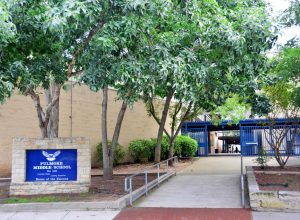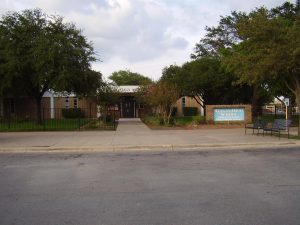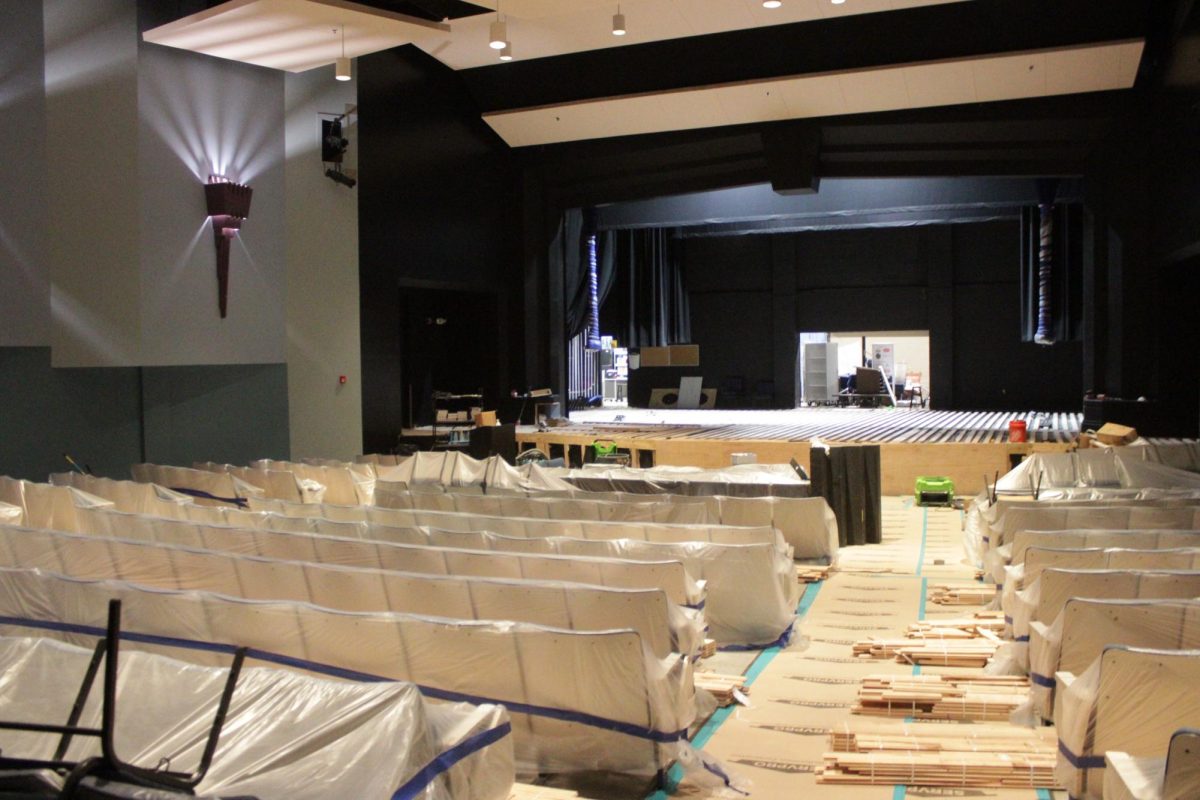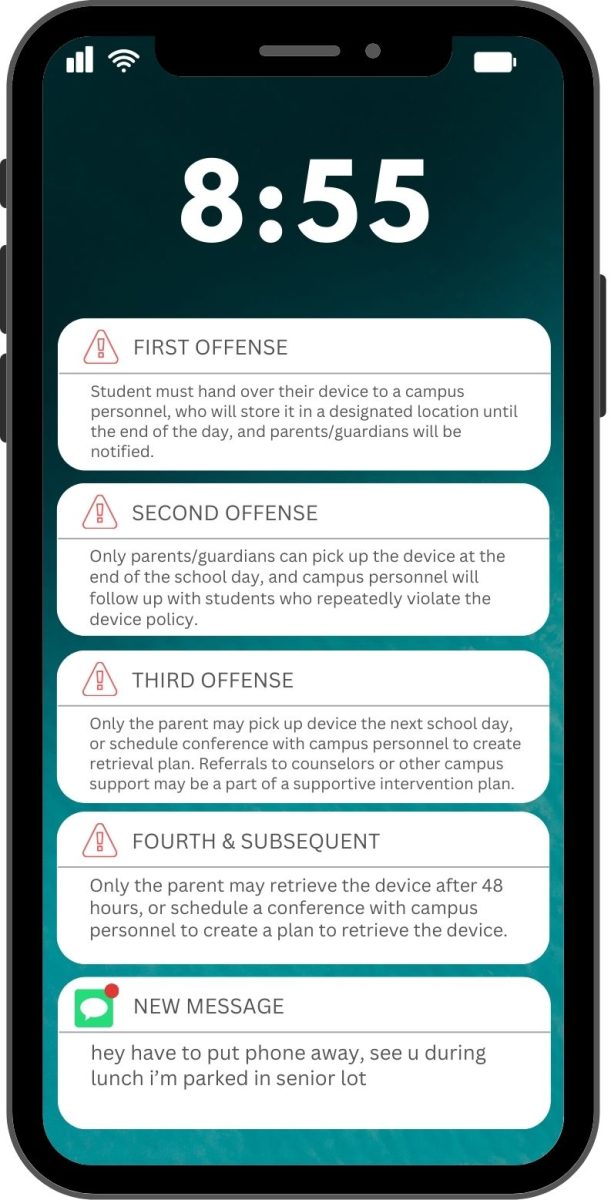
After the renaming of Robert E. Lee Elementary school to Russell Lee Elementary, AISD is taking action to change the names of other schools named after Confederate figures. There are five schools in the process of being renamed—John T. Allan Facility (formerly known as Allan Elementary), Fulmore Middle School, Lanier High School, Reagan High School and Eastside Memorial High School at the Johnston Campus. According to the AISD Board of Trustees, the process of changing these names will take place over the next six months, culminating in March when the school board will vote on these changes. In January, the school board will form committees at each school to decide the best course of action. In February, suggestions for name changes will be open to the public. The AISD school board president, Kendall Pace, proposed name changes be brought to the attention of Superintendent Paul Cruz.
“Many believe it is most important to educate the public again on who these individuals were, why the schools were originally named after them, and what has happened in recent history,” Pace said, “specifically some egregious national events surrounding both the use of Confederate symbols and the removal of Confederate monuments.”
Julie Cowan, an AISD trustee board member, said that the public will play a major role in determining how this process will play out.
“There are many groups that the district will engage to learn of their thoughts: school CACs [campus advisory councils], current students, faculty, alumni associations,” Cowan said. “We [board members] are also hearing from members of the public. Ultimately, as long as the board does not violate policy or the law, it can make any decision. But, the opinions of other stakeholders is of utmost importance to me and my colleagues.”
Many members of the McCallum staff have ties to the affected schools and have opinions about the proposed name changes. Science teacher Elaine Bohls-Graham is a graduate of Reagan High School, which was named after the Confederate Postmaster General John H. Reagan. Bohls-Graham was a student there when students were first bussed around the district during integration.

“I believe it was in 1970 that the Fifth Circuit Court of Appeals in New Orleans handed down the desegregation order and closed the original Anderson High School,” Bohls-Gahram said. “That’s when a majority of the kids were bussed to Reagan and to McCallum. At Reagan, we tried to be inclusive with everything, but we still had a lot of bomb threats, fires and fights. We had riots at the school and for a long time, mostly during my sophomore year. You would hear announcements all the time saying ‘all male teachers to the new mall’ or ‘all male teachers to the old mall’ because there was some type of fight. Later, we found out a lot of the fires and the bomb threats that were called in were from outside of the school.”
Bohls-Graham keeps in contact with many of her fellow Reagan alumni via Facebook. They are discussing possible new names for Reagan, including ways to commemorate the past students and staff.
“We’ve talked about Coach Dennis Ceder,” Bohls-Graham said. “Dennis was a graduate of Reagan; he played on the football team in the ‘70s, and he came back and coached at Reagan. If you’re following some of what AISD does, they tend to name schools after former teachers or athletic personnel, and that would be an amazing if we renamed it to honor and memorialize Dennis.”
While Bohls-Graham is in favor of honoring Coach Ceder, she has questions about renaming the school in the first place.
“If you’re going to change the schools’ [names], it doesn’t take care of the fact that you have, for example, the John H. Reagan State Building,” Bohls-Graham said. “Are you gonna change that? You have Reagan County in the state of Texas. Are you going to change that name? Where do you stop, and why are you only centering … on the Confederacy? I see both sides, but why are you not double checking more, because Stephen F. Austin owned slaves. Are we going to rename the city of Austin? Why are we just focusing on this little snippet of time?”
Bohls-Graham and her fellow Reagan alumni are worried about the lasting repercussions of renaming the schools and how the renaming will impact athletics and school culture.
“Are we going to be changing colors?” Bohls- Graham said. “Are we going to be changing the school mascot? Are we going to keep the traditions? Are we going to keep the Raider name? Those are the things that people are talking about.”
These traditions are important ways that alumni remember their high school experience and connect to and reflect on their shared past.
“I can only say that I know that it’s going to hurt us in the sense that we will no longer have a school,” she said. “The building will still be there, but it won’t be Reagan.”
It isn’t only former students who are apprehensive of the proposed name changes, AISD faculty have concerns as well. Melinda Von Rosenberg, who previously taught at Fulmore Middle School for five years, is also concerned with making these name changes in the first place.
“If you look back at some of the other people in our history, like Thomas Jefferson, he had slaves,” said Von Rosenberg, who added that Jefferson also wrote extensive literature about abolishing slavery. “There’s no way you’re gonna wean through every single person. Everybody has skeletons in their closet, and every culture does too. The Romans had slaves, and a lot of the Romans were black and had white slaves. We’re wasting our time instead of moving forward. We need to be trying to create something useful with the money we have; there’s a limited amount of money in the district. Enough is enough.”
Von Rosenberg is also concerned about the way Fulmore will be remembered after the name change. Fulmore Middle School was built in 1911 and named after Zachary Taylor Fulmore, a Travis County judge and an Austin Board of Trustee for 17 years (1880-1897). In his youth, Fulmore served as Confederate private in North Carolina. According to Von Rosenberg, changing Fulmore’s name will change the way the history and legacy of the school is perceived and how it will be remembered.
“[The name of the school] wasn’t an issue,” she said, “nobody talked about it, but what was spoken of often was it was the oldest school [building] in the district.”
The cost of the name changes is another issue that raises concerns. The board estimates the name changes will cost the district $322,000.
“I feel like that’s money not well spent.” Von Rosenberg said. “We can use that money to do something better with our time.”
The Board of Trustees expects to take funding for the name changes from their general revenue and is even accepting donations from the public.
Advocates for the name change point out the reason the schools were named after prominent Confederate figures in the first place. With the exception of Fulmore and Lanier, most of the five schools built during the ‘50s and ‘60s were named during the civil rights movement. This timing, accompanied with recent actions to take down statues memorializing Confederate history, contributed to AISD’s decision. According to Pace, the decision to rename AISD schools isn’t intended to change how citizens remember Confederate history but rather how they learn and grow from past mistakes.
“Times have changed, ideas always are evolving,” Pace said. “We should understand our diverse history and remember it, but shouldn’t have to be governed by decisions made under a different moral standard of the day.”








Ellen Fox • Jan 23, 2018 at 12:25 pm
Although I agree its not the biggest problem of our time, it’s still really great that it’s getting recognition and is getting fixed. It makes everybody way more comfortable to have a name that reflects someone who achieved something in Texas versus spread a lot of the ideas that came with the confederacy. The history will live on whether or not the names are changed, so why not make the names something that reflects an undeniably good thing?
Renee Ziegler • Jan 23, 2018 at 11:54 am
I like how this article really shows both sides to the story and gets the reader to think. I myself didn’t really have much of an opinion on this matter before I read this, and now I want to look more into it. It is a lot of money to change names when a lot of historical figures were problematic for today’s standards, but praising these people with a school is also not ideal. I would like to see where this goes in the future.
Cole T. • Jan 19, 2018 at 2:16 pm
I honestly don’t agree with the name changes, though I don’t have a strong opinion. The people who the school’s are named after are long dead, and so I feel that the name no longer represents, nor should, the political/ideological preference of the area and school community. I also feel that people may not like the idea of changing the name simply because they don’t like change from something their use to. I don’t think that the name offends anyone, though it is 2018, and people get offended by anything. In conclusion, I care very little about the outcome, though what this means is interesting. The school system, if not Austin as a whole are embarrassed by the state’s confederate past and are trying to hide/move on from it. I quite like what it means, but dislike the action in itself. Ultimately, it’s interesting the path Austin is taking, and, as a liberal democrat, I quite like it.